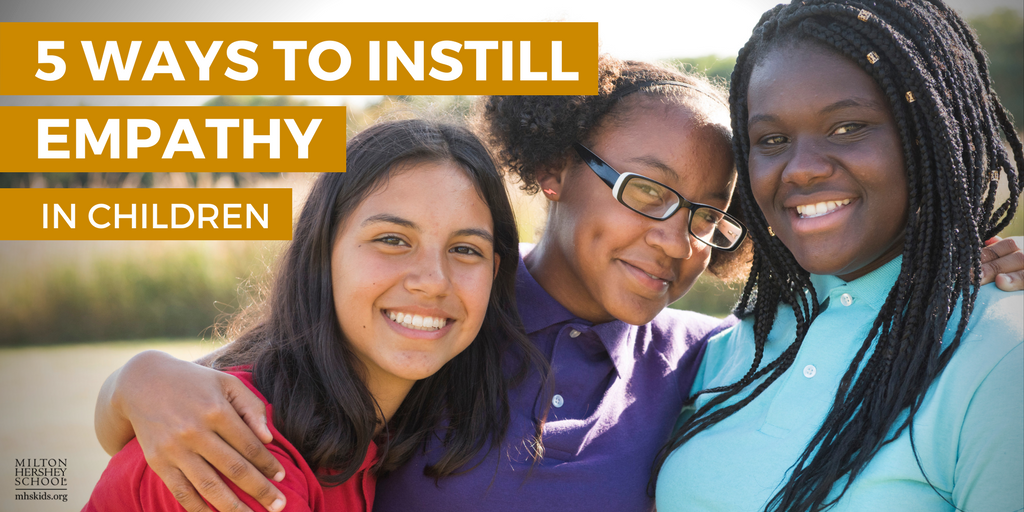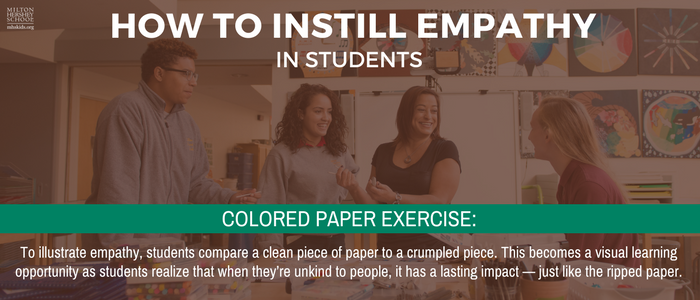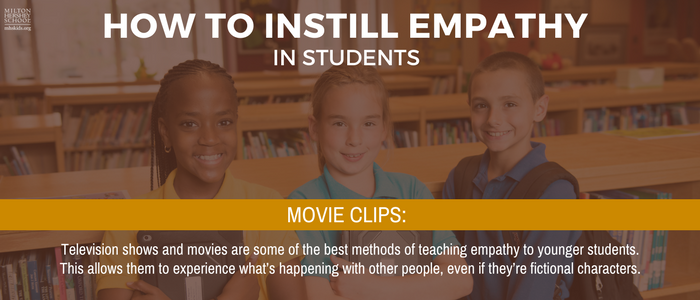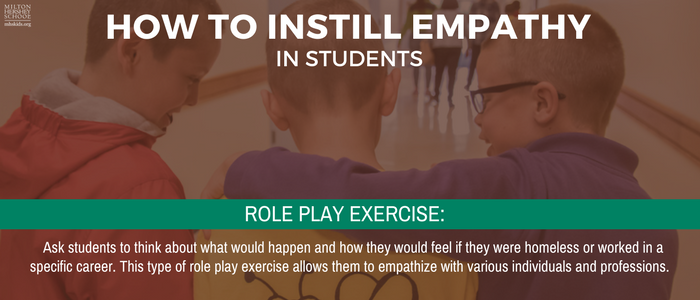5 Ways to Instill Empathy in Children
Featuring Diana Davis, MHS Social and Emotional Learning Curriculum Supervisor

When we think of success, skills like collaboration, time management and critical thinking may immediately come to mind. While these skills are important, many 21st century employers argue that empathy—the ability to identify with others and share their emotions—is at the heart of success.
“Empathy is one of the most important 21st century skills. It demonstrates that you can relate to other people, it shows you are self-aware, and it shows you can deal with your emotions and other people’s struggles,” said Diana Davis, MHS Social and Emotional Learning Curriculum Supervisor.
So how do we teach students to master a skill that’s rooted in emotion instead of fact?
“Visual stimulation really helps students—anything where they can see, hear and experience what’s happening with other people,” Davis added. “It helps drive home themes like social intelligence, diversity and respect.”
At Milton Hershey School, pre-K to 12th grade students learn how to be empathetic in and out of the classroom through creative activities that teach them to manage emotional and social situations. Take a look at five ways to instill empathy in students of all ages.
1. Colored paper exercise

To illustrate empathy, middle school teachers can show students a crisp, clean piece of colored paper and ask them to share positive adjectives that describe the paper. After students share their initial observations, ask them to crumple, rip or step on the paper. This becomes a visual learning opportunity as students realize that when they’re rude or unkind to people, it has a lasting impact—just like the ripped paper. Students learn they have two choices: to offer care and concern, or tear each other down.
2. Movie clips

Television shows and movies are some of the best methods of teaching empathy to younger students. This allows them to experience what’s happening with other people, even if they’re fictional characters. For example, the movie “Wonder” can lead to meaningful discussions among students as they share their thoughts and insights about a character who had multiple surgeries on his face.
3. Role-play exercise

In and out of the classroom, role play activities can help elementary students learn about other people. At MHS, our home life curriculum includes a lesson called “In Your Shoes” that asks students to think about what would happen and how they would feel if they were homeless or worked in a specific career. This type of role play exercise allows them to empathize with various individuals and professions.
4. Kindness campaign

To build positive school culture, try starting a kindness campaign. Encourage students of all ages to perform acts of kindness, and write down their actions on slips of paper that are displayed across the school. To engage students, try setting a schoolwide goal such as 1,000 acts of kindness in two weeks. This promotes positivity and teaches students to be proactive in the way they act toward students and adults.
5. Positive messages

For high school students who are craving independence, it’s important to create a sense of community and belonging. Provide students with colorful sticky notes, and encourage them to write positive messages to give to their peers. This allows them to learn from one another and express themselves in positive ways, which is an important part of empathy.
Ultimately, empathy is more than being kind—it takes it a step further. Empathy is about demonstrating a genuine respect for others and being able to positively respond to challenging situations because you understand the other person’s emotions. With this skill, students can enter the 21st century workforce armed with compassion, understanding and social awareness.

